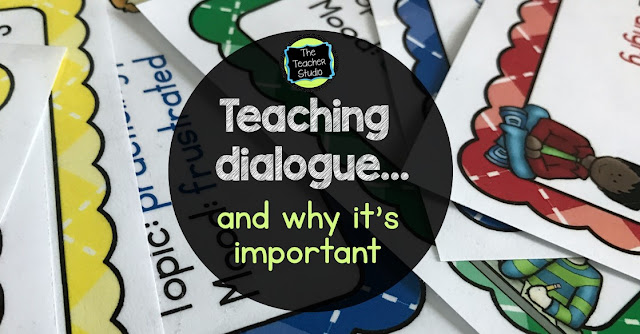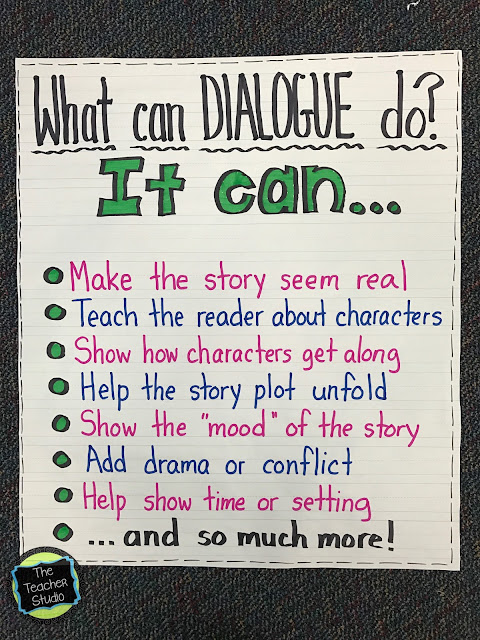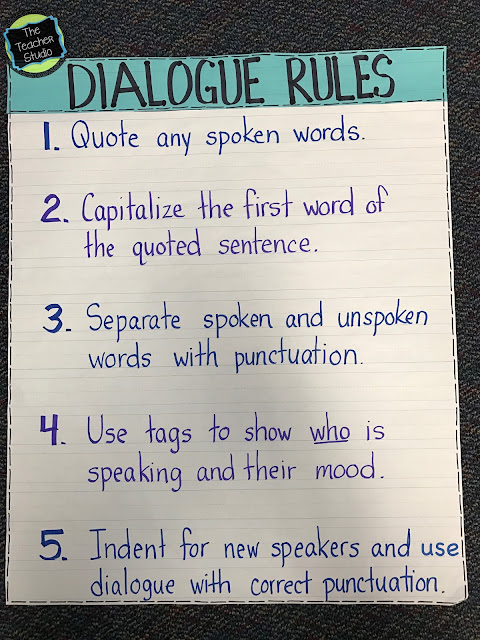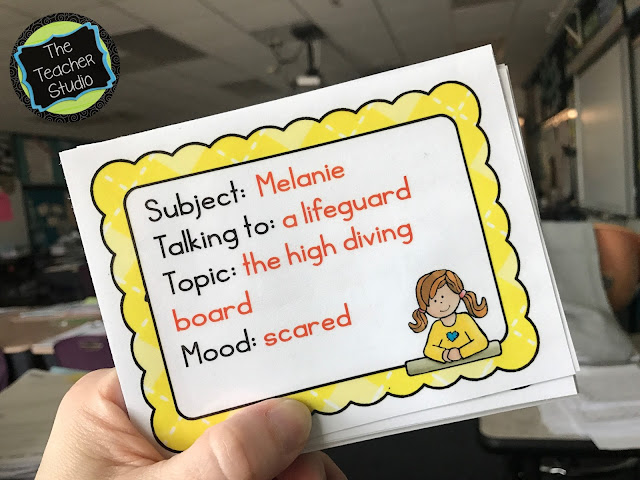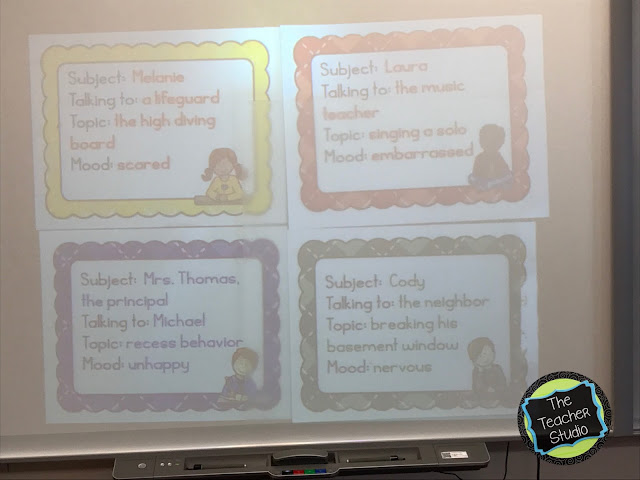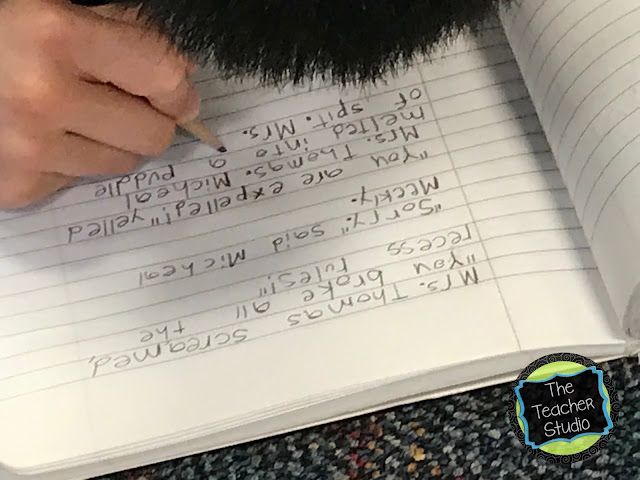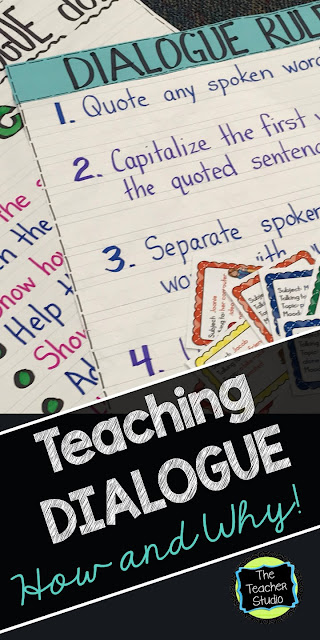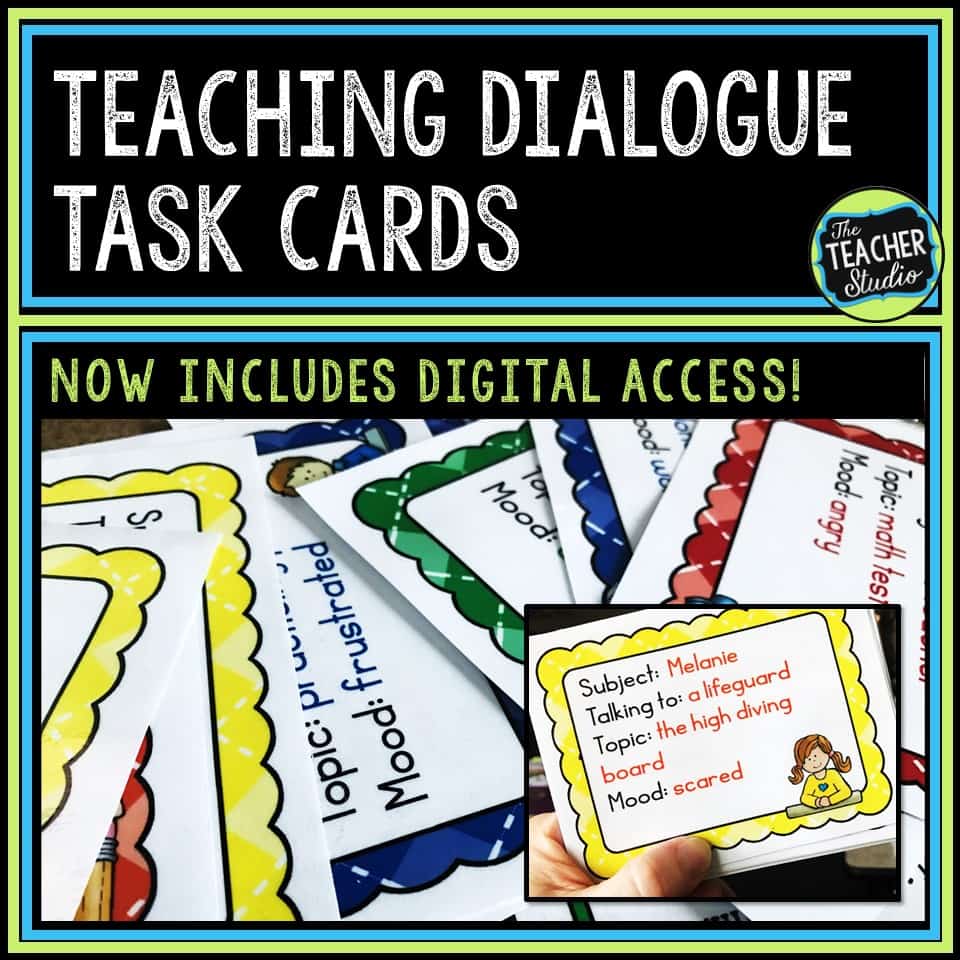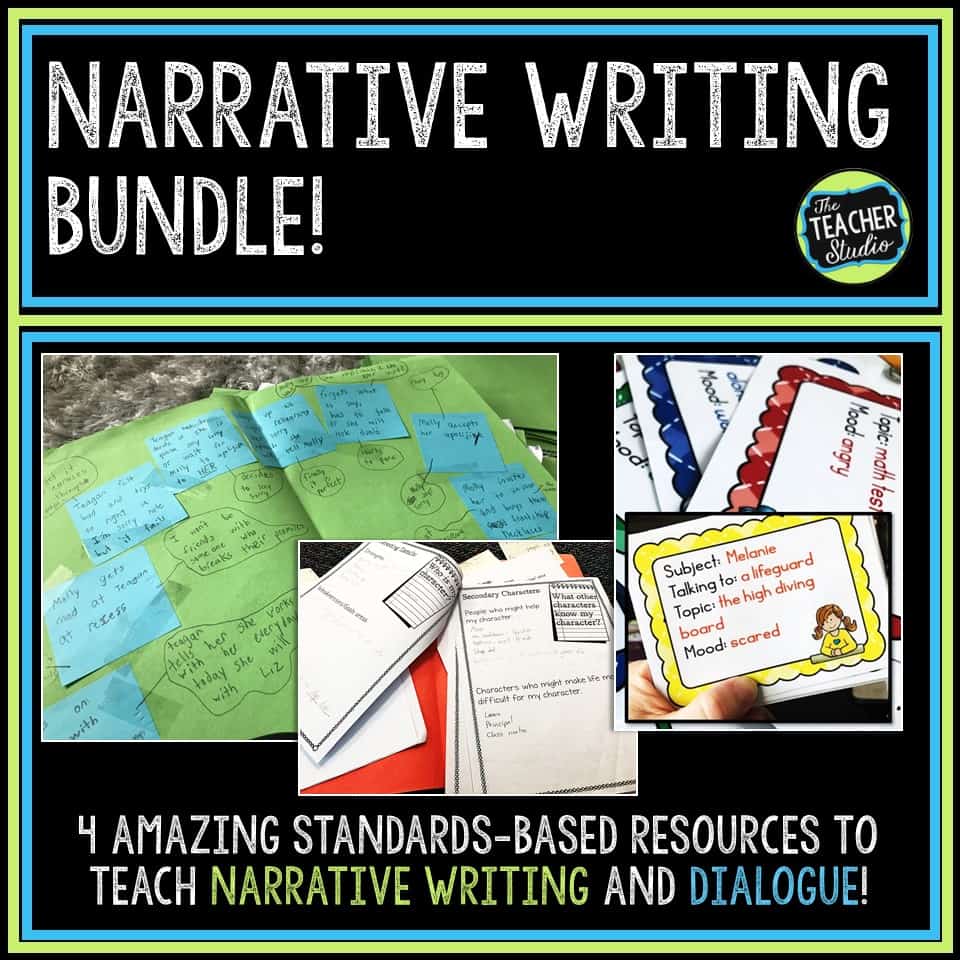
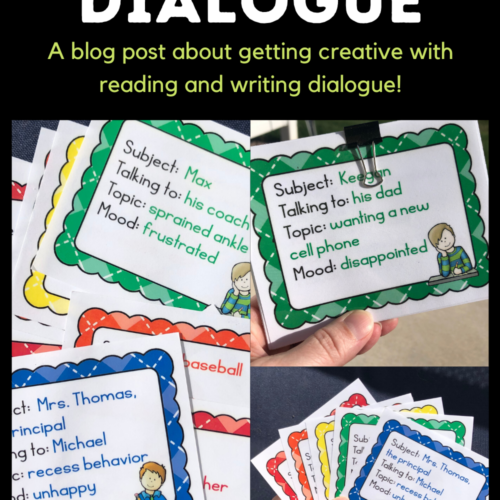
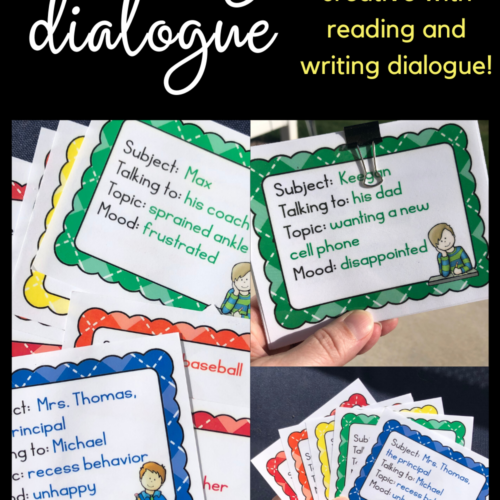
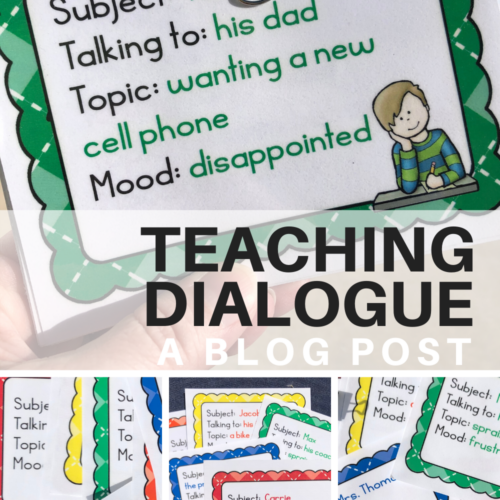

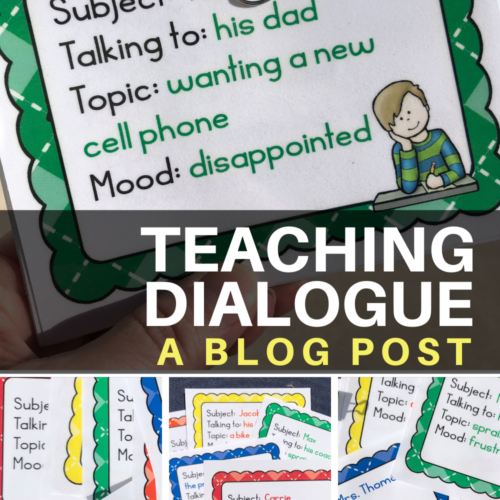
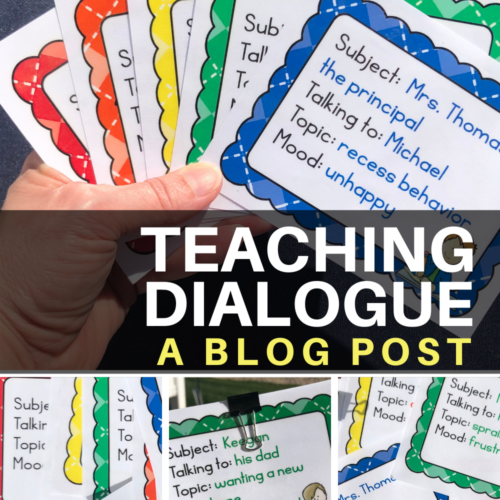
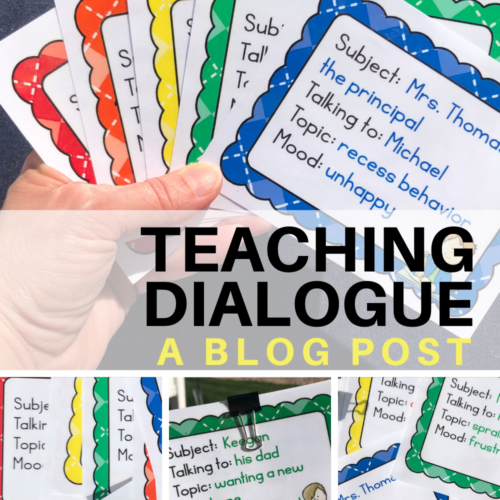

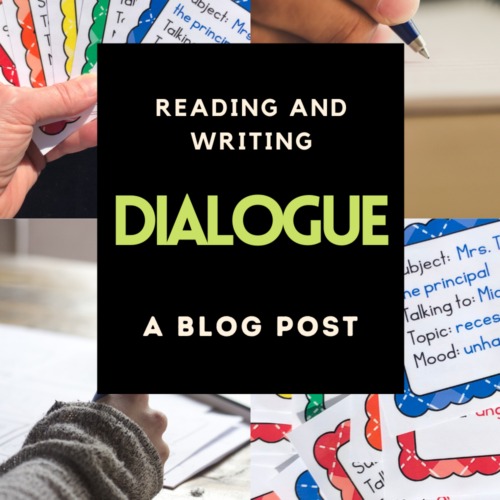
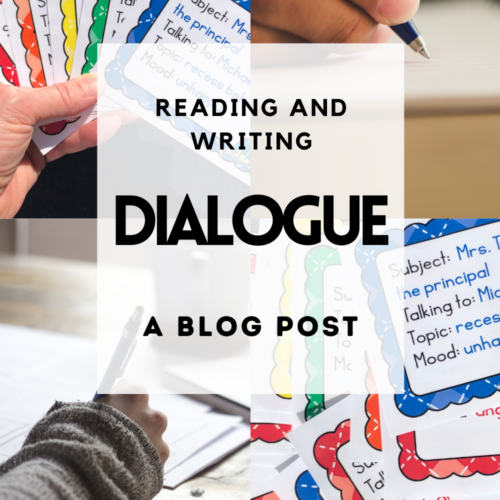
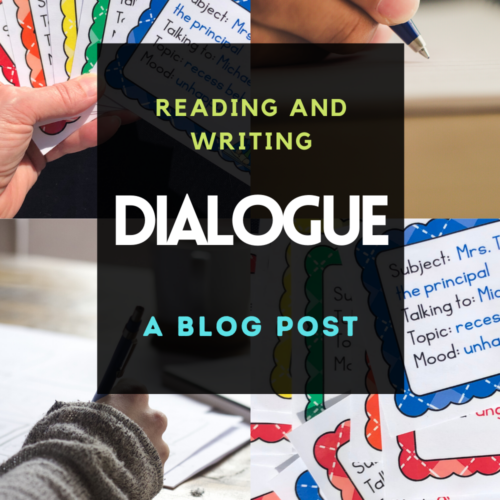
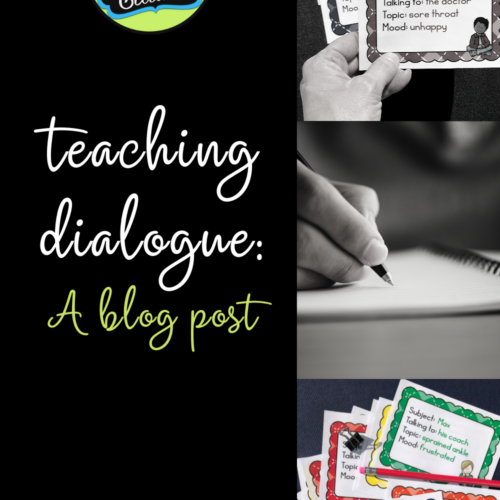
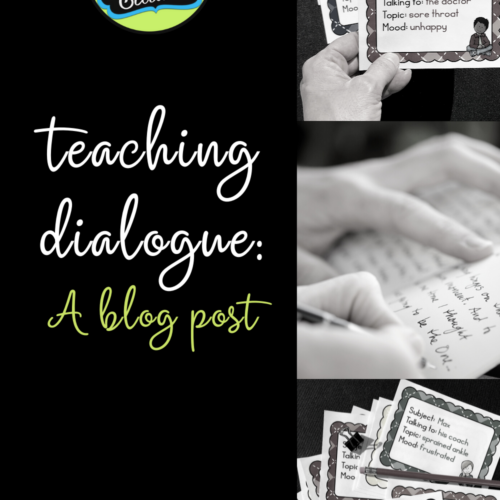
We are digging into a fun narrative writing unit to complement our historical fiction unit. I know many of you write personal narratives…many write realistic fiction…mysteries–you name it. One of our fun writing projects is to take a scene from one of their historical fiction book club books and rewriting it through the eyes of a different character. It’s so much fun to talk about point of view and how we can take a very “known” event and make it our own. Teaching dialogue is a part of this!
Why are we teaching dialogue anyway?
In order to really tie back to our writing standards, I use parts of the same planning guide I used earlier in the year–but without having to create the character. (Not sure what I’m talking about? Check out this post). We brainstormed those ever important setting clues (which they were quite familiar with since they just finished reading the book!) and then dug into planning their stories. Watch for a post on the drafting process soon!
Before we dig into writing, I wanted to do a quick review on dialogue–both the reasons WHY writers use dialogue and HOW they punctuate/write it correctly. It’s a tough writing skill for intermediate students–especially with all the different ways one can punctuate and format it!
To start, I wanted my students to really study the WHY–something we started with our book clubs and our read aloud. We talked about how dialogue should have a purpose; we’ve all heard stories that unfold a little something like this.
“Hey. What are you doing?”
“Going to the park.”
“Why?”
“For baseball.”
“OK.”
“What are you doing?”
“Nothing”
(Kind of reminds me of teenagers texting, to be honest!)
Is it dialogue?
Yes. Is it adding meaningfully to a story? Not so much. We talked about all the things dialogue can help an author do…this list is just a smattering of ideas–certainly it is not meant to be all-inclusive, but I think it’s interesting for students to see that dialogue has a purpose–and they can experiment with these as they begin drafting!
In fact, as I read my read aloud now, I will highlight certain examples of dialogue for us to consider how it is helping the author convey the big ideas of the story. There are TONS of great examples in Number the Stars, our current read aloud! I think it’s really valuable for students to realize that writers are intentional with things like this–and that understanding this can help them not only improve their WRITING–but understand their reading more deeply as well.
The next thing I wanted to review is the actual “rules” for punctuating dialogue. We had done lessons on this earlier this year, but it is definitely something that needs lots of repetition. Next, we reviewed by using the following anchor chart and I put up several examples of dialogue. We highlighted each of these features with different colors. I forgot to take a picture of that! Sorry!
Time to model teaching dialogue in reading and writing!
After we had reviewed, I wanted to model some dialogue writing with my own “think alouds” to show how to punctuate it. First, I pulled out my dialogue writing cards that we had used earlier this year and told my students that we were going to get creative. Next, I reminded them of how SERIOUS our historical fiction stories are–so this was our chance to let loose a little!
I started with this card and had them talk in trios about what Melanie could possibly say to a lifeguard. Trust me, we had some hilarious ideas! I picked one and wrote it down under the document camera.
We then went back to our groups to discuss what the lifeguard could say back–and we had so much fun! I then had the students try their own versions of this same dialogue–with the reminder to be appropriate!
Sharing our work
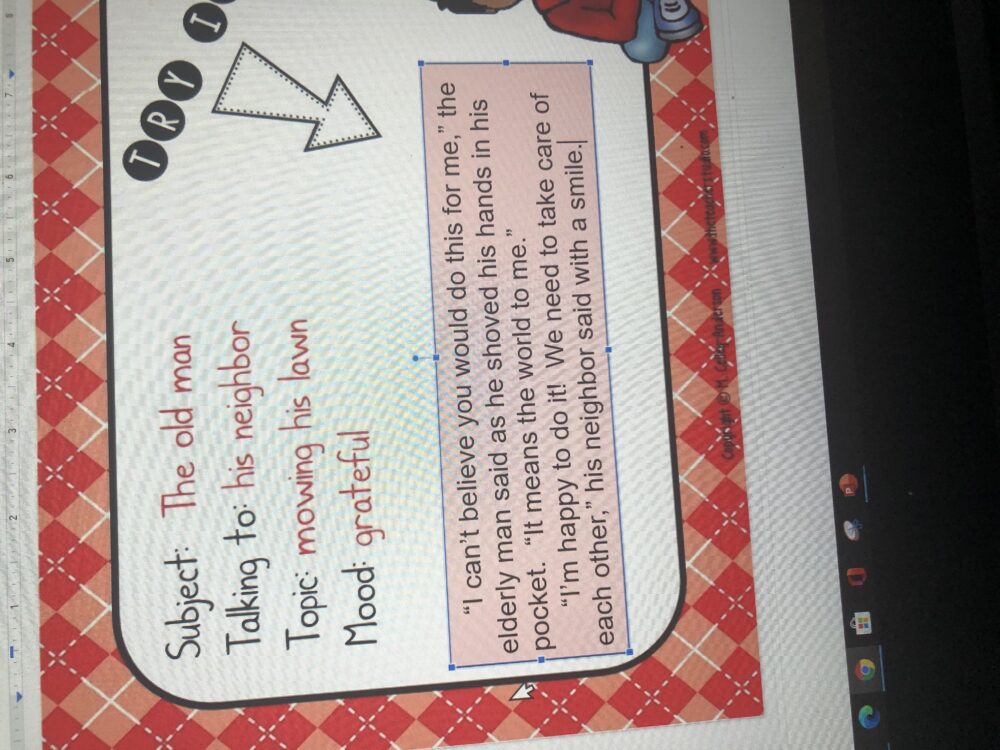
Want to check out another narrative writing blog post?
Try this one geared toward helping students plan their writing. If you want to see how we invent our characters, check out this one!


